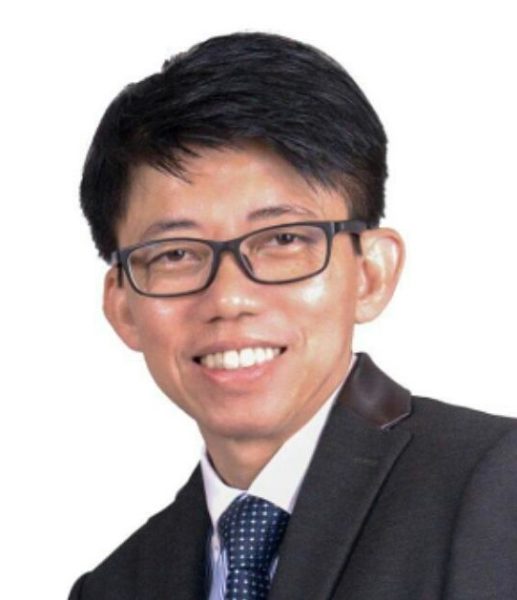
Face recognition may be a new technology to many users scanning their faces on their phone for the first time. However, it has been around for a while now, especially when used for surveillance and access control.
The state of the art today incorporates artificial intelligence (AI) and machine learning to recognise the “liveness” of a face. So, someone placing a photo in front of a camera won’t be able to trick a system into letting him in.
It won’t be fooled even if someone dons a mask like one worn by Tom Cruise in Mission Impossible, according to Japanese industrial giant NEC, which supplies biometrics systems to governments around the world.
The company widely credited with the world’s most accurate and fastest face recognition system even tested that out just to prove that its system was smart enough.
In real world tests, it just completed a series of trials of safe city technologies with the Singapore authorities earlier this month, the second such large testbed it has carried out here with the government.
Accuracy is no longer a concern today, says Walter Lee, evangelist and government relations leader at NEC’s Global Safety Division, in this month’s Leaders Q&A.
The bigger question is how well the technology can be leveraged to offer insights that were not possible in the past without the computing power and sophisticated easily available today, he adds.
Q: Briefly, can you say how facial recognition has progressed over the years, since the early days when people doubted its usefulness?
A: We’ve had face recognition for many years now. It has become much more accurate. In the early days, consumers used early-generation technology to, say, unlock their PC. Customer acceptance was low because it was not accurate.
The more accurate systems were used by governments, mostly for surveillance and access control in public areas or airports. But today, it is more widely used commercially as well.
In Japan, we have tested a system at Sumitomo Mitsui Banking Corporation to let staff verify their identity using their faces. It compares a live image against a pre-registered image at a dining facility.
Employees scan their faces at a point-of-sale terminal and check out at a counter after collecting their food. So, there’s no need to use a credit card or cash. Just your face.
In future, face recognition will be more commonly used for authentication in consumer devices, like phones. However, it has to be affordable enough and trusted enough for larger transactions (besides simply unlocking a phone). It can be used as a second factor instead of issuing a token.
Today, accuracy is no longer a concern. Computation power and AI have evolved to a point they can bring insights we never had before.
Now when we try to match a face, it is not just through an algorithmic search alone – there’s AI involved. To get there, the system needs training. Since NEC is a pioneer, we have experience we can tap on.
Q: How does liveness come into play today?
A: Liveness is a new dimension in face recognition. It lets a system know if a person is real, or if he is wearing a mask or simply placing a photo in front of a camera.
We even had a person who made a silicon mask of himself – the same kind used in Hollywood like in Mission Impossible – test out our system.
He put it on and the face recognition engine detected that the face was not real. Yes, the mask was in 3D, and even even though it had similar features, it couldn’t fool the system.
The magic comes from AI. Learning from data from the past, it has figured out a way to discover that a person is actually wearing a mask, even though that may not be apparent to the human eye. You need large data sets to do this – the larger they are, the more accurate the system can be.
Q: What are the biggest challenges for cities when it comes to using facial recognition for surveillance?
A: If you are just trying to verify your face on your phone, it is easy. You have one registered image to compare with a live image. It’s just one-to-one authentication.
For surveillance, you need more resources. If you want to whitelist or blacklist someone, you search for him through a database. This can be less than a second through six million records but you need computing power. This is one to N, where N is the number of records you are trying to compare with.
Then there’s N to N, where you don’t know who’s in the frame but you want to know what’s going on through your huge database of images. This is where NEC is going further than others.
Today, event analytics can detect the same person loitering at an airport twice a day for the past four days. It may point out that he has also been hanging out at a site where a terror cell is known to be operating.
That’s the actionable intelligence that will be helpful to the authorities. They don’t need a whitelist or a blacklist, the system can self-learn through image data mining. Of course, you still need to alert a human supervisor who will take action.
Q: People feel they are being watched all the time now. Can the average citizen still believe that his privacy is not encroached on?
A: Privacy will remain very important. It’s not something that is traded off. With online services today, a lot of people are not quite aware of how their data is used, so there is concern.
One way is to anonymise the data. So, you don’t associate the data with an individual, unless it’s needed for a serious investigation. A retail mall that is trying to understand if people are gazing at a video wall may not need to know each individual.
For public surveillance, people do understand the need today. In times of insecurity, anything that helps you stabilise the situation will be welcome. You don’t always see police on the street but you will be happy to see them during a dangerous situation.
Of course, a heightened state cannot last and you cannot live in a state of tension. So, face recognition is a tool that can help and it will have to be used in a way that people want it to be used. You should not have to choose safety or privacy – it’s not a trade-off.






